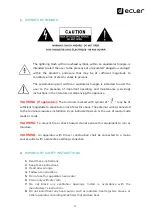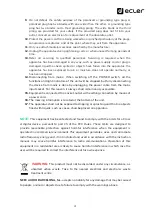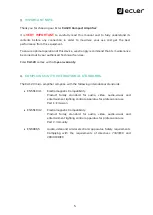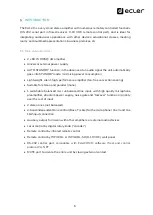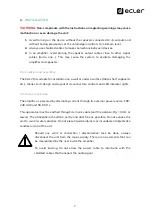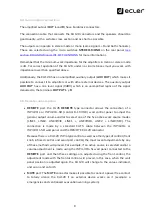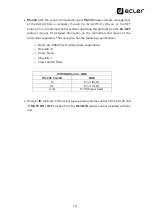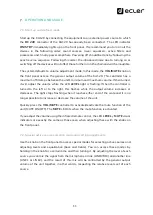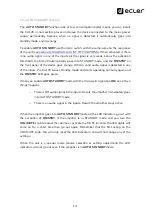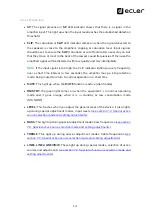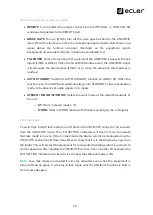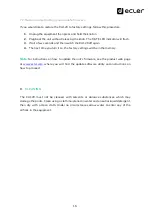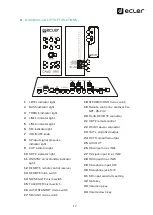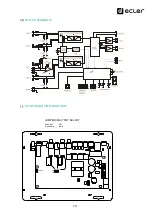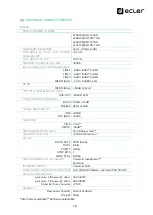
11
OPERATION AND USAGE
7.1. Start up and default mode
Start up the CA120 by connecting the equipment to an external power source to which
the
DC 24V
connector of the CA120 has already been connected. The LED indicator
ON/STBY
immediately lights up on the front panel. We recommend you turn on all the
devices in the following order: sound sources, mixer, equalisers, active filters and
processors and, finally power amplifiers. Powering off should be done by following the
exact reverse sequence. Following this order, the introduced noise due to turning on or
switching off the devices will not affect those further on in the chain and will be inaudible.
The system defaults to volume adjustment mode. In this mode, the
VOL/MUTE
knob on
the front panel acts on the general output volume of the CA120. This controller has a
maximum of 64 steps between the unit's minimum and maximum volume. When turned,
it will adjust the volume while the LED
LEVEL
light is flashing. When the controller is
turned to the left or to the right, this flashes while the output volume increases or
decreases. The light stops flashing when it reaches either end of the scale and it is no
longer possible to increase or decrease the volume of the unit.
Quickly press the
VOL/MUTE
controller to activate/deactivate the mute function of the
unit (MUTE ON/OFF). The
MUTE
LED lits when the mute function is activated.
If you adjust the volume using the infrared remote control, the LED
LEVEL
y
MUTE
visual
indicators are exactly the same as those seen when adjusting these with the knobs on
the front panel.
7.2. Special active source selection mode and setting adjustments
Use the knob on the front panel to access special modes for selecting active sources and
adjusting levels and equalization (bass and treble). You can access these modes by
holding in the knob for a certain time and then turning it. By adjusting the level of each
source you can mix the signal from the microphone or line (LINE3/MIC) and another line
(LINE1 or LINE2), and the result of this mix will be controlled by the general output
volume of the unit together, in other words, respecting the relative levels set of each
source.



